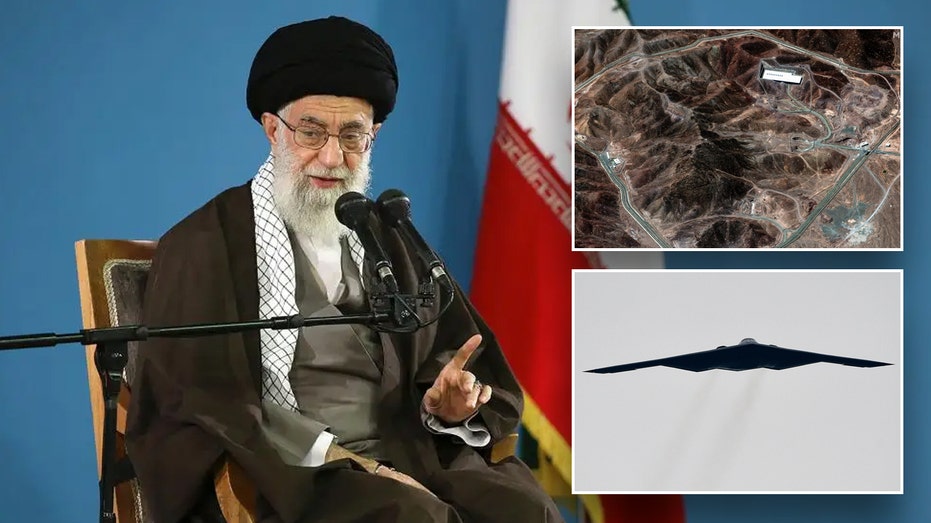Related News
How bunker buster bombs work and how they could destroy Iran’s Fordow nuclear site
Posted by - Senbookpro KAAYXOL -
on - 8 hours ago -
Filed in - Society -
-
14 Views - 0 Comments - 0 Likes - 0 Reviews

As Israel’s battle to take out Iran’s nuclear capabilities continues, Iran’s most heavily-protected nuclear facility at Fordow, two hours from Tehran, remains intact.
Many military analysts believe that a two-ton precision bunker buster developed by and in sole possession of the U.S. is the only means of eliminating the Fordow site, which some claim may be capable of producing a nuclear warhead in as little as two to three days.
Jonathan Ruhe, Director of Foreign Policy for JINSA, spoke with Fox News Digital about bunker-busters, and how Israel or the U.S. might use them to eliminate the Fordow nuclear threat.
IN IRAN’S ‘FOREVER WAR’ AGAINST THE US, REGIME HAS TARGETED, KILLED AMERICANS WORLDWIDE
Ruhe said bunker busters are munitions designed to use the force of gravity to "penetrate through any mixture of earth, rock, and concrete before the bomb itself then explodes" underground. The explosion may either take out the target fully, or "collapse the structure" around the target "without necessarily obliterating it," he explained.
Bunker busters come in multiple weight classes. Israel possesses 2,000- and 5,000-pound varieties. Only the U.S. possesses the 30,000-pound GBU-57 A/B Massive Ordinance Penetrator (MOP).
Developed under President George W. Bush, Ruhe says the MOP was "designed specifically" for targets like Fordow, where nuclear sites or command and control bunkers are hidden far underground.
Ruhe said that the number of munitions required to target Fordow depends on the depth of the facility. The Foundation for Defense of Democracies states that Fordow’s facility is between 60 and 90 meters (196 to 295 feet) below ground. The Director General of the International Atomic Energy Agency (IAEA) Rafael Grossi told The Financial Times last week that the facility reaches 800 meters underground.
Ruhe said Grossi, who has been to the Fordow facility, may have been "trying to message, ‘hey, military action is not the solution here.’"
TRUMP SAYS HE MAY OR MAY NOT STRIKE IRAN: ‘I’VE HAD IT’
The MOP is said to have a penetration depth of 200 feet. Ruhe said that given Fordow’s distance underground and the difficulty of penetrating the rocky mountainside the site is dug into, the U.S. would likely use a technique called burrowing, in which a B-2 Spirit stealth bomber would "drop several MOPs in succession, one after the other."
Fordow poses a unique target. Ruhe said that pilots have to take into account the facility’s multiple, narrow exit tunnels, and achieve the right angle of impact to penetrate the ground.
Though Israeli air dominance over Iran has eliminated the need for stealth air assets, Ruhe believes the stealth B-2 would be the only tool adequate for delivering the MOPs. Ruhe said timing constraints make the use of B-52 bombers "not relevant."
Additionally, Ruhe explained that talk of loaning B-2 bombers to the Israeli Air Force is "a dangerous distraction." Not only is there "0.0% chance" that the U.S. would give out this strategic capability, but Ruhe says training Israeli pilots to fly the B-2 would take several months.
Mark Dubowitz, CEO of the Foundation for Defense of Democracies, told Fox News Digital that "destroying [Fordow] from the air is a job only the U.S. can do."
Given that Israel is "very tactically inventive" and "very good at maximizing the capabilities they do have," Ruhe says that Israel could achieve its goals at Fordow without the MOP.
Not only did Ruhe offer the unlikely but not impossible scenario where Israel might "storm the site in a commando raid," but he said that Israel could use F-15s, escorted by F-35s, to deliver multiple 5,000-pound bunker busters over Fordow, utilizing the same burrowing tactic the U.S. would likely employ.
Such a strike, he admitted, would "achieve a more limited definition of success" than the MOP could.
The U.S. and Israel are likely to have different goals in targeting Fordow, Ruhe said. "Americans tend to think of obliterating targets," Ruhe said, whereas Israel would "probably be fine with saying they knocked back the operations there by a year or so."
Ruhe estimates that the bunker busters may not completely destroy the facility, but that it may be considered a success if it were to knock out the power source to Iranian centrifuges, or making "the air too polluted" for centrifuges to operate.
Israel has "successfully knocked out the other parts of Iran’s fuel cycle" in Natanz and Isfahan, Ruhe said. "If you want to prevent a nuclear Iran, Fordow is a big part of that," Ruhe said. "But it’s only just a part of what still needs to be done and thought about."
Fox News' Caitlin McFall contributed to this article.







